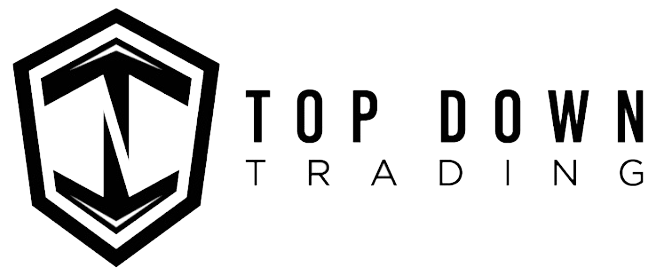Discover expert strategies for boosting your wholesale clothing business profits. Learn about market analysis, sourcing, pricing, online selling, and inventory management...
Article Outline
Introduction
Overview of the wholesale clothing industry's potential for profitability.
Importance of strategic planning in maximizing profits.
Understanding the Wholesale Clothing Market
Key trends and consumer behaviours.
Analyzing the competitive landscape.
The role of market research in selecting products.
Sourcing Strategies for Wholesale Clothing
Finding reliable suppliers and manufacturers.
The benefits of direct sourcing vs. using wholesalers.
Negotiating terms to reduce costs.
Pricing Strategies to Enhance Profit Margins
The psychology of pricing in fashion retail.
Competitive pricing vs. value-based pricing.
Discounts and promotions: when to use them effectively.
Online Reselling: Platforms and Best Practices
Overview of popular online marketplaces for fashion retail.
Building a brand and customer loyalty online.
SEO and marketing strategies for online reselling.
Inventory Management for Optimal Turnover
Techniques for efficient inventory tracking and management.
The role of technology in inventory optimization.
Balancing stock levels to meet demand without overstocking.
Recap of the key strategies for maximizing profits in wholesale clothing.
Encouragement to implement these strategies for business growth.

A Brief Summary of This Article
Introduction
The fashion industry is renowned for its dynamic nature, offering ample opportunities for retailers to carve out profitable niches. Within this vibrant sector, the wholesale clothing market presents a lucrative avenue for businesses aiming to maximize their profits. This article delves into essential strategies fashion retailers and online resellers can employ to enhance their financial outcomes. From insightful market analysis to effective pricing and inventory management, we'll guide you through the nuances of thriving in the competitive world of wholesale clothing. With practical tips and strategic advice, this piece aims to be your go-to manual for achieving success in the fashion retail industry.
Understanding the Wholesale Clothing Market
The foundation of a profitable wholesale clothing business lies in a deep understanding of the market. This section will explore key consumer trends, such as the growing demand for sustainable and ethically produced garments, and how these trends can influence your product selection. We'll also discuss the importance of competitive analysis and how thorough market research can uncover gaps in the market, providing opportunities for your business to stand out. Practical tips will include:
Conducting market research: Utilizing tools and resources to gather data on consumer preferences and industry trends.
Analyzing competitors: Identifying your main competitors and their strategies can reveal areas for differentiation.
Sourcing Strategies for Wholesale Clothing
Sourcing products is a critical aspect of the wholesale clothing business. This section will cover identifying and partnering with reliable suppliers, the advantages of direct sourcing, and tips for negotiating favourable terms. Bullet points will highlight:
Finding reliable suppliers: Criteria for selecting the right partners.
Negotiating terms: Strategies for achieving the best prices and payment terms.
Pricing Strategies to Enhance Profit Margins
Pricing is a powerful tool in the fashion retail arsenal. We'll examine different pricing strategies, including competitive and value-based pricing, and discuss how promotions and discounts can be used strategically to boost sales without eroding profits. Key points will include:
Determining the right pricing strategy: Factors to consider when setting prices.
Using discounts effectively: Timing and tactics for promotional activities.
Online Reselling: Platforms and Best Practices
With the surge in online shopping, establishing a presence on digital platforms is crucial. This section will guide readers through selecting the best online marketplaces for their products, tips for building an online brand, and SEO strategies to attract more customers. Highlights will include:
Choosing the right platform: Pros and cons of various online marketplaces.
SEO and online marketing: Techniques to increase visibility and drive sales.
Inventory Management for Optimal Turnover
Efficient inventory management can significantly impact your bottom line. We'll explore advanced techniques and technologies for tracking and optimizing stock levels, ensuring that you can meet demand without the risk of overstocking. This section will provide insights on:
Inventory optimization: Tools and strategies for managing stock efficiently.
Balancing stock levels: Techniques to avoid overstocking and stockouts.
Conclusion
Maximizing profits in the wholesale clothing business requires a blend of strategic planning, market insight, and operational efficiency. By implementing the strategies outlined in this article, retailers and resellers can enhance their competitive edge and achieve sustainable growth. Whether you're just starting or looking to optimize an established business, these tips and best practices will serve as a valuable resource for navigating the complexities of the fashion retail industry.

Now, let's look into each headline in depth!
Wholesale Clothing: Top Strategies for Maximizing Profits
Introduction
The world of fashion retail is both exhilarating and challenging, where the right strategies can lead to significant profitability, especially within the wholesale clothing segment. As consumer preferences evolve and the market landscape shifts, businesses that adapt swiftly and strategically can carve out substantial niches for themselves. This article embarks on a journey to unveil the top strategies for maximizing profits with wholesale clothing, focusing on the business side of fashion retail, online reselling, and the intricate financial aspects of buying and selling clothing wholesale.
In the fast-paced fashion world, understanding market dynamics, consumer behaviour, and pricing strategies is just the beginning. Sourcing high-quality products, managing inventory efficiently, and leveraging online platforms for reselling are critical components that can set a business apart in the competitive marketplace. Whether you're a seasoned retailer or a budding entrepreneur in the online reselling arena, the insights provided here aim to guide you through optimizing your business model for enhanced profitability. Through practical tips, strategic advice, and a focus on industry best practices, this article is designed to be an indispensable resource for anyone looking to thrive in the wholesale clothing market.
With an emphasis on actionable strategies and a reader-friendly flow, we delve into maximizing profits in a sector known for its volatility and immense potential. Every aspect of the wholesale clothing business is covered, from sourcing strategies that align with your brand values to pricing models that attract and retain customers. So, let's embark on this informative journey together, unlocking the secrets to profitability in the wholesale clothing industry.
Understanding the Wholesale Clothing Market
The wholesale clothing market is a complex ecosystem influenced by global trends, consumer behaviours, and technological advancements. Successful market navigation requires a deep understanding of these factors and an ability to anticipate changes and adapt strategies accordingly.
Consumer Trends and Behaviors: Modern consumers are increasingly conscious of sustainability and ethical manufacturing practices. This shift in preference has prompted retailers to source eco-friendly and ethically produced garments. Additionally, the rise of fast fashion has altered consumer expectations, demanding quicker turnover of trendy, affordable clothing. Adapting to these behaviours by selecting products that align with consumer values and market demand is crucial.
Competitive Landscape Analysis: The market is saturated with established brands and new entrants, making differentiation key to capturing consumer attention. A thorough competitive analysis helps identify what competitors are offering and at what price points. This knowledge enables businesses to find their unique value proposition in product quality, design uniqueness, or sustainability practices.
Market Research's Role: Effective market research is indispensable for understanding which products will sell well. This involves analyzing sales data, monitoring fashion trends, and understanding your target market's demographic and psychographic characteristics. Practical tips for conducting market research include:
Utilizing online tools and platforms to gather insights on consumer preferences and trends.
Attending trade shows and fashion events to see what products are coming to market.
Subscribing to industry reports and publications for in-depth analysis and forecasts.
Adapting to Market Needs: Quickly adapting to market needs is a significant advantage. This might mean diversifying product lines to include sustainable options or leveraging technology to offer personalized shopping experiences. Flexibility in business operations allows for rapid response to consumer demand shifts, ensuring that your product offerings remain relevant and desirable.
Case Studies and Success Stories: Learning from successful businesses in the wholesale clothing market can provide valuable insights. Many have succeeded by focusing on niche markets, offering exceptional customer service, or building a strong brand identity around quality and sustainability. These success stories inspire and offer practical strategies that can be adapted to your business model.
In summary, understanding the wholesale clothing market is foundational to maximizing profits. It involves staying abreast of consumer trends, analyzing the competitive landscape, conducting thorough market research, and being adaptable to market needs. By focusing on these areas, businesses can position themselves for success in the dynamic and competitive world of fashion retail.

This section provides a comprehensive overview of the wholesale clothing market, emphasizing the importance of market understanding and strategic adaptation. As we proceed to the next sections, we'll delve into specific strategies related to sourcing, pricing, online reselling, and inventory management, each designed to enhance further the profitability and operational efficiency of wholesale clothing businesses.
Sourcing Strategies for Wholesale Clothing
Sourcing is the backbone of the wholesale clothing business, where the right strategies can significantly impact your cost structure and quality of offerings. Establishing strong relationships with reliable suppliers, understanding the benefits of direct sourcing versus using wholesalers, and mastering the art of negotiation are key factors that can drive your business toward higher profitability.
Finding Reliable Suppliers and Manufacturers: The quality of your clothing and the reliability of its supply chain depends heavily on your choice of suppliers and manufacturers. Identifying those that align with your business values and quality standards is crucial. Look for suppliers with a strong track record, positive reviews, and a commitment to ethical practices. Building a good supplier relationship involves clear communication, regular orders, and timely payments, leading to better pricing and terms.
Direct Sourcing vs. Using Wholesalers: Direct sourcing from manufacturers can offer cost benefits and greater control over product quality and supply chain transparency. However, managing relationships and logistics requires a larger investment of time and resources. On the other hand, wholesalers provide convenience and access to a broader range of products without the need for large orders or direct management of manufacturing processes. The choice between these options should be based on your business size, capacity for managing relationships, and strategic goals.
Negotiating Terms to Reduce Costs: Effective negotiation can lead to significant cost savings and more favourable terms, such as payment schedules, minimum order quantities, and shipping costs. Preparation is key to successful negotiation; understand the supplier's constraints, establish clear objectives for what you want to achieve, and be ready to offer something in return, like committing to long-term orders.
Research market prices to ensure you're getting competitive rates.
Build rapport with suppliers to foster a relationship that can lead to better deals.
Be open to compromise to find a mutually beneficial agreement.
Strategic Sourcing for Market Trends: Aligning your sourcing strategy with market trends and consumer demand is essential. This might mean sourcing sustainable materials as the market shifts towards eco-friendly products or quickly adapting to the latest fashion trends by working with manufacturers who offer fast turnaround times.
Quality Control Measures: Implementing strict quality control measures is non-negotiable. This involves setting clear quality standards with suppliers, conducting regular product inspections, and having a robust process for handling defects. Quality control ensures customer satisfaction, reduces returns, and maintains your brand's reputation.
Leveraging Technology for Sourcing Efficiency: Technology plays a crucial role in sourcing efficiency. Platforms that connect retailers with suppliers globally, supply chain management software, and tools for virtual quality inspections can streamline operations, reduce costs, and improve product quality.
In conclusion, a strategic approach to sourcing in wholesale clothing involves finding and nurturing the right supplier relationships, making informed decisions between direct sourcing and using wholesalers, and mastering negotiation skills. Businesses can significantly enhance their profitability and competitive edge by aligning sourcing strategies with market trends and consumer demands and implementing effective quality control measures.

As we move forward, the next sections will delve into pricing strategies that can enhance profit margins, online reselling tactics for maximizing visibility and sales, and inventory management practices crucial for maintaining optimal stock levels and turnover rates.
Pricing Strategies to Enhance Profit Margins
Pricing is critical in the wholesale clothing business, significantly impacting sales volume and profit margins. The right pricing strategy can attract customers, differentiate your brand from competitors, and ultimately determine the success of your business. This section explores various pricing strategies, including pricing psychology, competitive versus value-based pricing, and the strategic use of discounts and promotions.
The Psychology of Pricing in Fashion Retail: Understanding how customers perceive price and value is essential. Psychological pricing tactics, such as setting prices just below a round number (e.g., $19.99 instead of $20), can make a product seem more affordable. Another strategy is anchoring, where a higher-priced item is placed next to a more affordable one to make the latter seem like a great deal. These tactics can influence buying behaviour by appealing to customers' perceptions of value.
Competitive Pricing vs. Value-Based Pricing:
Competitive Pricing: This strategy involves setting prices based on competitors' charges for similar products. It requires constant market monitoring to stay competitive but can be effective in markets with high price sensitivity. However, ensuring that this strategy does not lead to a race to the bottom, where profit margins are eroded to undercut competitors, is important.
Value-Based Pricing: This approach sets prices based on the perceived value to the customer rather than the cost to produce the item or what competitors are charging. It requires a deep understanding of your target market and what they value in clothing, such as sustainability, exclusivity, or quality. Value-based pricing can support higher profit margins and build brand loyalty but demands clear communication of the value proposition to customers.
Discounts and Promotions: When to Use Them Effectively:
Strategically timed discounts and promotions can drive sales, clear out inventory, and attract new customers. However, frequent discounts can devalue your brand and lead customers to wait for sales instead of buying at full price. Consider the following tips for using discounts effectively:
Limited-time offers create urgency and encourage quick purchases.
Seasonal sales align with customer expectations and can boost end-of-season inventory turnover.
Exclusive discounts for loyalty program members or social media followers can enhance customer loyalty and engagement.
Implementing Dynamic Pricing: Dynamic pricing adjusts prices in real-time based on demand, competition, and other market factors. This strategy can be particularly effective in the fast-moving fashion industry, where trends and consumer preferences change rapidly. Advanced analytics and pricing software can help businesses implement dynamic pricing effectively.
Pricing for Online Reselling: When selling on online platforms, consider the additional costs, such as platform fees, shipping, and returns. Pricing strategies may need adjustment to remain competitive while covering these costs and achieving desired profit margins.
In conclusion, a well-thought-out pricing strategy is vital for maximizing profits in the wholesale clothing business. By understanding and applying the principles of psychological pricing, choosing between competitive and value-based pricing, and using discounts and promotions judiciously, businesses can attract and retain customers while enhancing their profitability. Dynamic pricing and careful consideration of online selling costs refine pricing strategies, ensuring businesses stay competitive in the ever-evolving fashion market.

Next, we will explore online reselling platforms and best practices, which are crucial for expanding the reach and driving sales in the digital age, followed by inventory management strategies that ensure efficiency and optimize stock levels.
Online Reselling: Platforms and Best Practices
The digital transformation has revolutionized the way wholesale clothing is sold, offering unprecedented opportunities to reach a global audience. Online reselling platforms have become a vital channel for fashion retailers, enabling them to showcase their products to a wider audience and capitalize on the growing trend of online shopping. This section will cover the selection of appropriate platforms for online reselling, building a brand in the digital space, and employing SEO and marketing strategies to enhance visibility and sales.
Choosing the Right Online Marketplace:
eBay and Amazon: These platforms offer a vast audience but come with high competition and fees. They're suitable for retailers with a broad range of products which can compete on price and delivery.
Etsy: Ideal for vintage or handmade clothing sellers, Etsy attracts customers looking for unique, personalized fashion items.
Specialized Fashion Platforms: Sites like Poshmark and Depop cater specifically to fashion enthusiasts and offer a community-oriented selling experience, perfect for niche or trendy items.
Building a Brand Online:
Creating a strong online presence is crucial for differentiation and customer loyalty. A well-designed website and active social media profiles can help tell your brand's story and engage with customers. High-quality product photography, compelling descriptions, and a consistent tone of voice across all channels enhance brand identity and customer trust.
SEO and Marketing Strategies for Online Reselling:
Search Engine Optimization (SEO): Optimize your website and product listings with relevant keywords, high-quality content, and meta descriptions to improve visibility on search engines.
Social Media Marketing: Use platforms like Instagram and Facebook to showcase your products, share behind-the-scenes content, and engage with your audience. Influencer collaborations can also drive brand awareness and sales.
Email Marketing: Build a mailing list to inform customers about new arrivals, sales, and exclusive offers. Personalized emails can increase engagement and repeat business.
Customer Service Excellence:
Providing exceptional customer service is vital in the online space. Quick responses to inquiries, easy returns, and positive addressing customer feedback can enhance your reputation and encourage repeat business.
Leveraging Analytics for Improved Performance:
Use analytics tools from online platforms and your website to track sales, customer behaviour, and product performance. These insights can inform your marketing strategies, inventory decisions, and product development.
Adapting to Mobile Shopping:
With increasing numbers of consumers shopping on mobile devices, ensuring your website and listings are mobile-friendly is essential. A seamless mobile shopping experience can significantly increase sales.
In conclusion, successful online reselling in wholesale clothing requires a strategic approach to platform selection, brand building, and marketing. By leveraging SEO, engaging on social media, and prioritizing customer service, retailers can significantly enhance their online presence and sales. Continuous analysis and adaptation to consumer behaviour and technological trends will ensure sustained success in the competitive online marketplace.

Finally, we will delve into inventory management techniques, focusing on strategies to ensure efficient tracking, optimal stock levels, and high turnover rates, which are crucial for maintaining profitability in the wholesale clothing business.
Inventory Management for Optimal Turnover
Efficient inventory management is crucial for the success of any wholesale clothing business. It involves balancing meeting consumer demand and minimizing excess stock, which can tie up valuable resources. Effective inventory management strategies help ensure the right products are available at the right time, optimizing stock levels to maximize sales and turnover rates. This section discusses techniques for efficient inventory tracking and management, the role of technology in inventory optimization, and strategies for balancing stock levels.
Techniques for Efficient Inventory Tracking and Management:
SKU Management: Use Stock Keeping Units (SKUs) to track each item's movement and performance. SKUs help identify which items are selling fast and which are not, enabling more informed purchasing and pricing decisions.
Regular Inventory Audits: Conduct regular physical counts to verify and reconcile stock levels with inventory records. This practice helps identify discrepancies early and maintain accuracy in stock management.
Demand Forecasting: Analyze sales data, market trends, and seasonal fluctuations to predict future product demand. Accurate demand forecasting allows smarter restocking decisions, reducing the risk of overstocking or stockouts.
The Role of Technology in Inventory Optimization:
Advancements in technology have transformed inventory management, making it more efficient and less prone to errors.
Inventory Management Software: These systems offer real-time tracking of inventory levels, sales, and deliveries, automating many of the manual tasks associated with inventory management. Features like automated reordering based on preset thresholds can significantly reduce the risk of stockouts.
Cloud-Based Solutions: Cloud-based inventory management solutions provide the flexibility to access inventory data from anywhere, facilitating better coordination between sales and inventory teams and quick adjustments to inventory levels based on sales trends.
Balancing Stock Levels to Meet Demand Without Overstocking:
Just-In-Time (JIT) Inventory: This strategy involves keeping stock levels as low as possible and ordering goods only when needed. While it reduces holding costs, it requires precise demand forecasting and reliable suppliers to avoid stockouts.
Safety Stock: Maintain a buffer stock to account for unexpected spikes in demand or delays in restocking. Calculating the right amount of safety stock involves analyzing historical sales data and considering potential supply chain disruptions.
ABC Analysis: Categorize inventory into three groups (A, B, and C) based on their importance to sales and profitability. Focus more resources on managing 'A' items, which contribute most to your revenue, while simplifying the management of 'B' and 'C' items.
Leveraging Data for Strategic Decision-Making:
Utilize inventory data to make strategic decisions about product promotions, discontinuations, and markdowns. Products with slower turnover rates might benefit from marketing boosts or price adjustments to increase their appeal.

Conclusion
In conclusion, mastering inventory management is a cornerstone of maximizing profits in the wholesale clothing business. By implementing efficient tracking and management techniques, leveraging technology for inventory optimization, and carefully balancing stock levels, businesses can achieve optimal turnover rates and meet consumer demand effectively. These strategies prevent revenue loss due to overstocking or stockouts and contribute to a leaner, more responsive operation.
This comprehensive guide has explored the top strategies for maximizing profits with wholesale clothing, from understanding the market and sourcing effectively to pricing strategies, online reselling, and inventory management. Implementing these strategies requires a combination of market insight, operational efficiency, and adaptability. For fashion retail and wholesale businesses, these practices offer a roadmap to enhanced profitability and sustained success in a competitive marketplace.
Thank you for reading! We hope you found this article useful. For more tips on wholesale buying, make sure to check our blog weekly!



